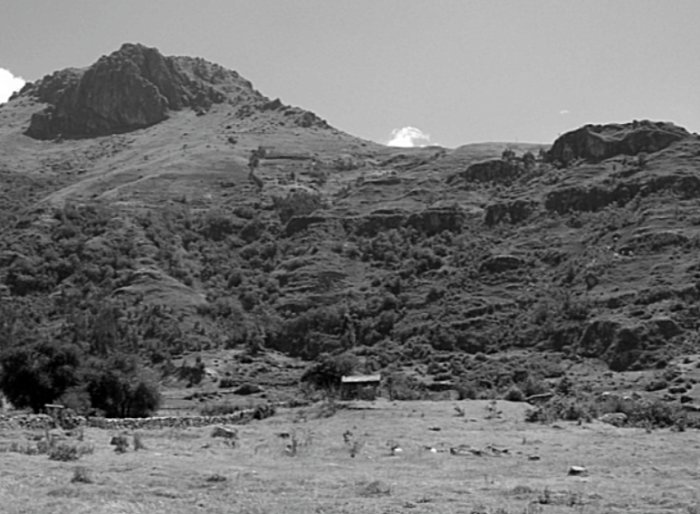Catequil – Inca God Of Thunder And Lightning Who Predicted The Future And Was Cultural Hero Of Inca People
A. Sutherland - AncientPages.com - Catequil created thunder by striking the clouds with his sacred spear and a mighty club. This Inca deity means even more.
The mountain of Cerro Icchal with the site of Namanchugo in the foreground. Image credit: Jordan Downey – ResearchGate
He was also a weather god and an oracle who foretold the future.
As a cultural hero for the Inca, he was worshiped from Quito to Cuzco. The Inca often carried an idol of Catequil into battle. His cult grew up near the Cerro Ichal Mountain in northwest Peru, probably because hills attract lightning.
Legend has it that Catequil was also responsible for twins born when he turned into a lightning bolt and participated in mortal lovemaking.
The excavations in Namanchugo - located on a small plain facing the mountain of Cerro Icchal - showed how Catequil went from being a small ceremonial center to a prominent and influential religious center.
The place has been identified as the main shrine dedicated to the worship of Catequil and was in use from ca. 400 AD -1555 AD. Early Namanchugo (ca. 400-1200 AD, in its early phase, was a prestigious shrine that drew many pilgrims from a local area. "Ceremonies and ritual feasting took place, and the shrine was largely dominated by non-elites." 1
Catequil represents a very complex god. He was considered the founding ancestor of Huamachuco, the god who led the people from their Pakarina (the place of origin). As the male god who brings the rain, he is also a symbol of fertility. At the same time, it is the hill itself, whose three rocks become Catequil, a ruling deity of the oracle related to the ancestors. Sometimes, Catequil (or Apocatequil) was recognized as two separate gods, or they represented the same.
Therefore, the Inca believed that he was, in fact, Apocatequil in disguise. The myths about Apocatequil are slightly different from those about Catequil. According to beliefs, Apocatequil, the god of lightning, had power over water and rain and served as the chief priest for the lunar deity, Coniraya. To keep Apocatequil content, the Inca built statues of his noble self and placed them upon the mountaintops.
Catequil means so much, but curiously, his face is unknown.
All we know about Catequil originates from ancient beliefs of the Inca, meticulously collected and recorded in the journals of the Spanish Augustinian priests who arrived in Peru in 1551 and later spread to other countries in South America like Ecuador in 1573, and from Ecuador in 1575 to Argentina, Bolivia, Chile, Colombia, Panama, and Venezuela.
Their records say that through the mouths of the priests of Cerro Ichal, Catequil predicted that the last Sapa Inca, Atahualpa, would be defeated, and he also criticized him for killing many people. In another prediction, he predicted the victory of the invading Christian army instead.
However, all accounts seem to agree that Atahualpa, dissatisfied with the prediction, ordered the beheading of the high priest Catequil and the destruction of the cult and the site at Cerro Ichal.
Credit: Adobe Stock - lchumpitaz
Some sources suggest the destruction of Catequil's cult, the killing of the high priest, and the burning of the idol, and others believe that the destruction was not entirely successful.
After Atahualpa's death, the Inca continued to worship the sacred cliff, found some fragments of the idol, and placed it in a new temple or house.
The Canadian archaeologist John R. Topic, Ph.D. from Harvard University, mentions in his works that the Augustinians were eager to "destroy idolatry" and devastated the temple walls, leaving the structure almost unrecognizable. At the same time, these priests worked hard, making several attempts to suppress the cult of Catequil. The shrine of Catequil was finally destroyed, but by the time of the destruction on the eve of the Spanish conquest, his cult was widespread in the north. By 1560, if not before, Catequil had become identified as a cultural hero.
Yet, Atahualpa's and the Augustinians' efforts failed in the mid-16th century.
The cult of Catequil survived and spread to neighboring Ecuador and later to Bolivia, Chile, Colombia, Panama, Venezuela, and Argentina. Catequil represents the complex Inca deity, with several intersecting identities recognized in many places.
He is one of northern Peru's most potent pre-Hispanic deities, whose power over people was overwhelming and reached the people in neighboring countries.
Written by – A. Sutherland AncientPages.com Staff Writer
Copyright © AncientPages.com All rights reserved. This material may not be published, broadcast, rewritten or redistributed in whole or part without the express written permission of AncientPages.com
Expand for referencesReferences:
H. Isbell, H. Silverman, Andean Archaeology
Jordan T. Downey, Catequil's Lithics: Stone Tools from an Andean Complex Society
More From Ancient Pages
-
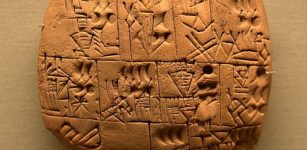 Uruk – Home To The Legendary Hero Gilgamesh
Featured Stories | Jun 6, 2021
Uruk – Home To The Legendary Hero Gilgamesh
Featured Stories | Jun 6, 2021 -
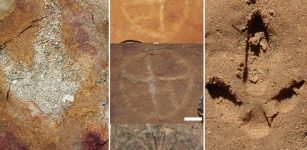 Intriguing Collection Of Petroglyphs And Dinosaur Footprints Found At The Serrote do Letreiro Site, Brazil
Archaeology | Mar 20, 2024
Intriguing Collection Of Petroglyphs And Dinosaur Footprints Found At The Serrote do Letreiro Site, Brazil
Archaeology | Mar 20, 2024 -
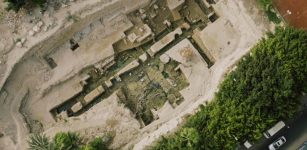 New Hope To Finally Find Tomb Of Alexander The Great
Archaeology | Mar 6, 2019
New Hope To Finally Find Tomb Of Alexander The Great
Archaeology | Mar 6, 2019 -
 Mysterious Otherworldly Creatures Witnessed By Biblical Prophet – What Happened?
Biblical Mysteries | Jun 30, 2020
Mysterious Otherworldly Creatures Witnessed By Biblical Prophet – What Happened?
Biblical Mysteries | Jun 30, 2020 -
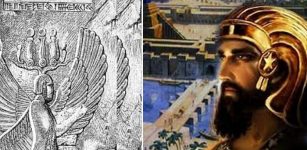 Cyrus The Great: Founder Of Achaemenid Empire Who Conquered Medians, Lydians And Babylonians
Featured Stories | Mar 21, 2019
Cyrus The Great: Founder Of Achaemenid Empire Who Conquered Medians, Lydians And Babylonians
Featured Stories | Mar 21, 2019 -
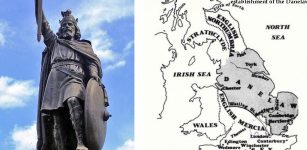 Anglo-Saxons Practically Eradicated Native Britons: The Question Is: Was It Ethnic Cleansing?
Archaeology | Jan 8, 2019
Anglo-Saxons Practically Eradicated Native Britons: The Question Is: Was It Ethnic Cleansing?
Archaeology | Jan 8, 2019 -
 Mysterious Jomsvikings: Fearless Scandinavian Warrior-Brotherhood
Featured Stories | Apr 26, 2016
Mysterious Jomsvikings: Fearless Scandinavian Warrior-Brotherhood
Featured Stories | Apr 26, 2016 -
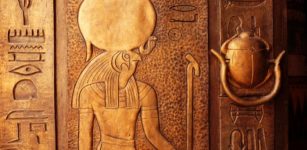 Sun God Ra Was Venerated In Every Age Of Ancient Egypt’s Long Dynastic History
Egyptian Mythology | May 3, 2021
Sun God Ra Was Venerated In Every Age Of Ancient Egypt’s Long Dynastic History
Egyptian Mythology | May 3, 2021 -
 3D Reconstruction Of ‘Lost Chapel’ Of Westminster Palace
Archaeology | Oct 9, 2017
3D Reconstruction Of ‘Lost Chapel’ Of Westminster Palace
Archaeology | Oct 9, 2017 -
 Anglo-Saxon Previously Unknown Monastic Or Trading Center – Discovered
Archaeology | Mar 7, 2016
Anglo-Saxon Previously Unknown Monastic Or Trading Center – Discovered
Archaeology | Mar 7, 2016 -
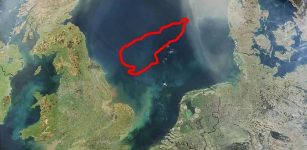 Magnetic Fields Used To Explore Doggerland And Other Prehistoric Submerged Sites
Archaeology | Mar 10, 2023
Magnetic Fields Used To Explore Doggerland And Other Prehistoric Submerged Sites
Archaeology | Mar 10, 2023 -
 Secrets Of The Ancient Children Of The Moon Whose God Came From Outer Space In A Shining Flying Disc
Featured Stories | Jun 1, 2020
Secrets Of The Ancient Children Of The Moon Whose God Came From Outer Space In A Shining Flying Disc
Featured Stories | Jun 1, 2020 -
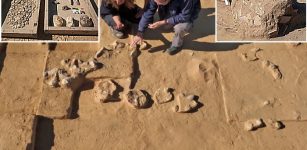 Ostrich Eggs Dated More Than 4,000 Years Discovered In Negev Desert Of Southern Israel
Archaeology | Jan 13, 2023
Ostrich Eggs Dated More Than 4,000 Years Discovered In Negev Desert Of Southern Israel
Archaeology | Jan 13, 2023 -
 Roskilde 6 – Longest Viking Ship Ever Discovered Was 37-Meters Long And Carried 100 Viking Warriors
Ancient History Facts | Dec 26, 2016
Roskilde 6 – Longest Viking Ship Ever Discovered Was 37-Meters Long And Carried 100 Viking Warriors
Ancient History Facts | Dec 26, 2016 -
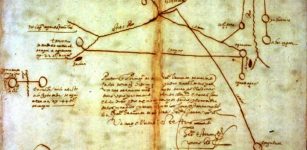 Etzanoa: Long-Lost Native American City Discovered In Kansas After 400 Years
Archaeology | Apr 24, 2017
Etzanoa: Long-Lost Native American City Discovered In Kansas After 400 Years
Archaeology | Apr 24, 2017 -
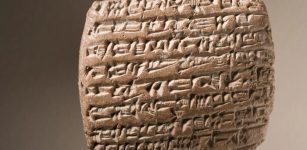 Locations Of 11 Lost Ancient Cities Revealed On 4,000-Year-Old Artifacts
Archaeology | Nov 15, 2017
Locations Of 11 Lost Ancient Cities Revealed On 4,000-Year-Old Artifacts
Archaeology | Nov 15, 2017 -
 Garamantes: 3,000-Year-Old Sophisticated North African Society Built 3,000-Mile Network Of Underground Irrigation Canals
Featured Stories | Jan 29, 2022
Garamantes: 3,000-Year-Old Sophisticated North African Society Built 3,000-Mile Network Of Underground Irrigation Canals
Featured Stories | Jan 29, 2022 -
 Lost Since 1362: Researchers Discover The Church Of Rungholt – A Sunken Medieval Trading Place
Archaeology | May 25, 2023
Lost Since 1362: Researchers Discover The Church Of Rungholt – A Sunken Medieval Trading Place
Archaeology | May 25, 2023 -
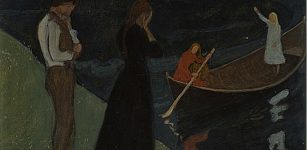 Tuonela – The Land Of The Dead In Beliefs Of Ancient Finnish People
Featured Stories | Nov 9, 2021
Tuonela – The Land Of The Dead In Beliefs Of Ancient Finnish People
Featured Stories | Nov 9, 2021 -
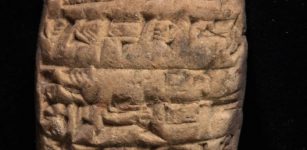 Lost City Of Irisagrig Comes To Life In Ancient Stolen Tablets
Archaeology | Jun 5, 2018
Lost City Of Irisagrig Comes To Life In Ancient Stolen Tablets
Archaeology | Jun 5, 2018

